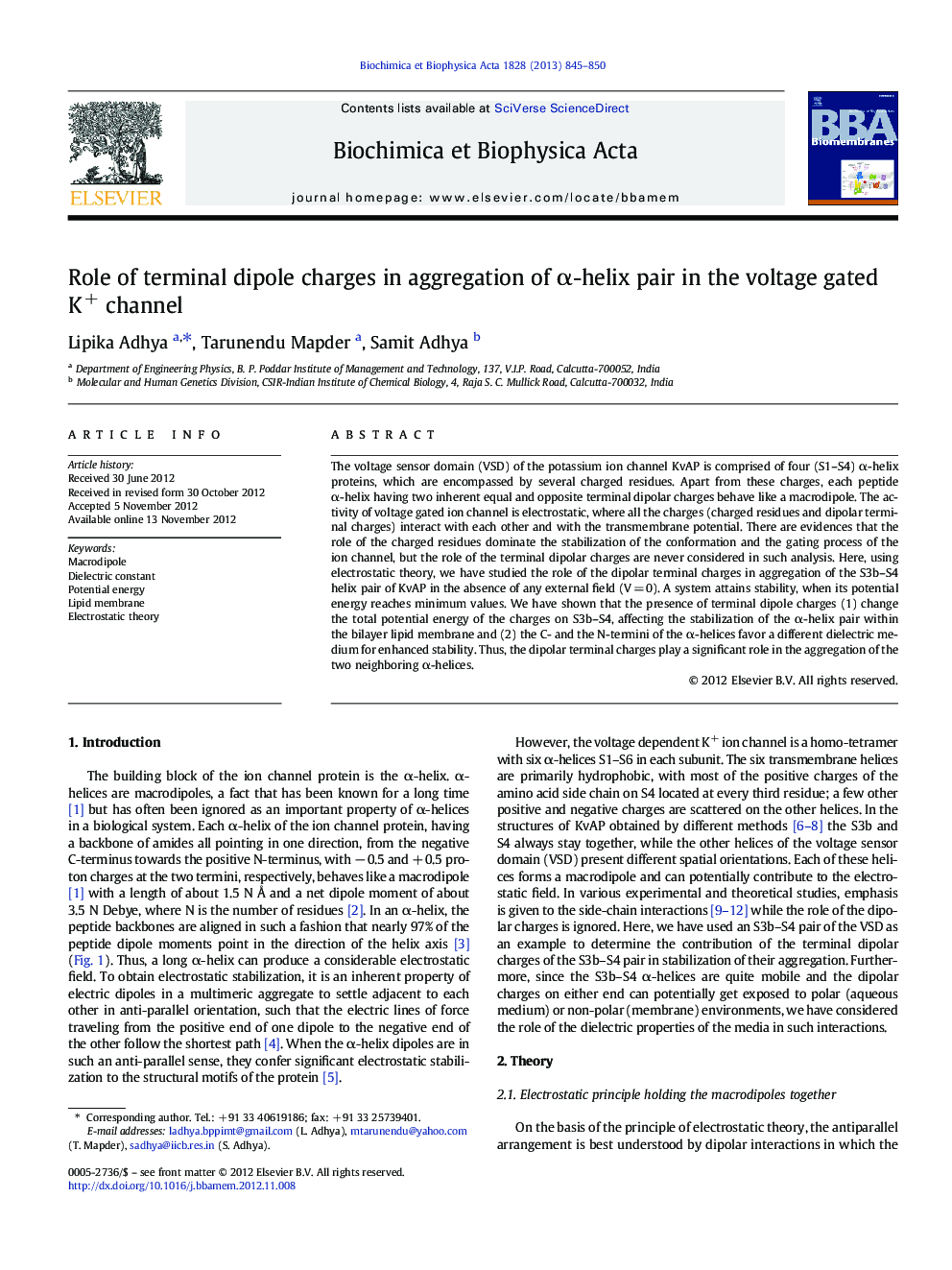| Article ID | Journal | Published Year | Pages | File Type |
|---|---|---|---|---|
| 1944423 | Biochimica et Biophysica Acta (BBA) - Biomembranes | 2013 | 6 Pages |
The voltage sensor domain (VSD) of the potassium ion channel KvAP is comprised of four (S1–S4) α-helix proteins, which are encompassed by several charged residues. Apart from these charges, each peptide α-helix having two inherent equal and opposite terminal dipolar charges behave like a macrodipole. The activity of voltage gated ion channel is electrostatic, where all the charges (charged residues and dipolar terminal charges) interact with each other and with the transmembrane potential. There are evidences that the role of the charged residues dominate the stabilization of the conformation and the gating process of the ion channel, but the role of the terminal dipolar charges are never considered in such analysis. Here, using electrostatic theory, we have studied the role of the dipolar terminal charges in aggregation of the S3b–S4 helix pair of KvAP in the absence of any external field (V = 0). A system attains stability, when its potential energy reaches minimum values. We have shown that the presence of terminal dipole charges (1) change the total potential energy of the charges on S3b–S4, affecting the stabilization of the α-helix pair within the bilayer lipid membrane and (2) the C- and the N-termini of the α-helices favor a different dielectric medium for enhanced stability. Thus, the dipolar terminal charges play a significant role in the aggregation of the two neighboring α-helices.
Graphical abstractFigure optionsDownload full-size imageDownload high-quality image (115 K)Download as PowerPoint slideHighlights► Inherent existence of the dipolar charges in α-helices of VSD ► Dipolar charges affect the potential energy of a pair of α-helices. ► Dipolar charges exposed to lipid membrane enhances stability.
